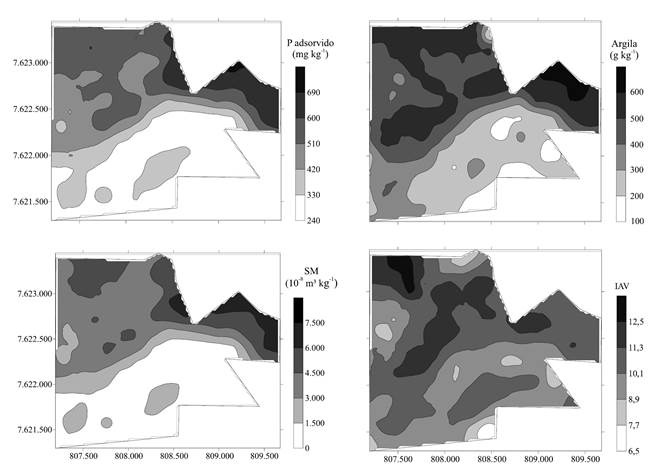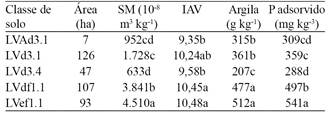The objective of this work was to evaluate the possibility of mapping adsorbed phosphorus through soil color and magnetic susceptibility. The experiment was done in a 380-ha sugarcane area, which included four types of Oxisols, with different texture and natural fertility. Two hundred and forty-one soil samples were collected at 0.00-0.25-m depth. The soil redness index was calculated from sample values of hue, value, and chroma, obtained with diffuse reflectance spectroscopy. Regression models were adjusted between adsorbed phosphorus and soil magnetic susceptibility or redness index. Data spatial dependence was evaluated with geostatistics. Magnetic susceptibility is significantly correlated to adsorbed phosphorus, which allows it to be used as a component in pedotransfer functions for indirect quantification of soil adsorbed phosphorus. The redness index and the magnetic susceptibility show spatial dependency with adsorbed phosphorus. Soil magnetic susceptibility and redness index, evaluated with diffuse reflectance spectroscopy, can aid in the mapping and identification of areas with different phosphorus adsorption potential.
soil fertility evaluation; spatial dependency; diffuse reflectance spectroscopy; geostatistics; pedotransfer; spatial variability.






